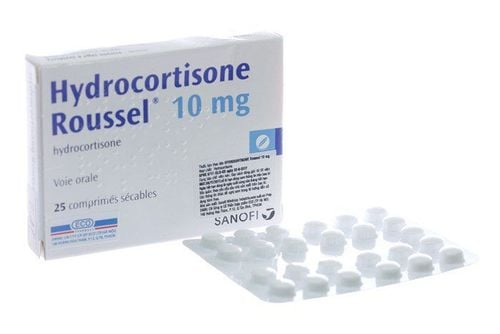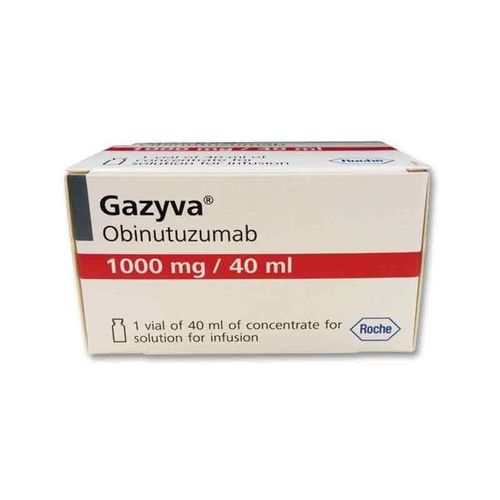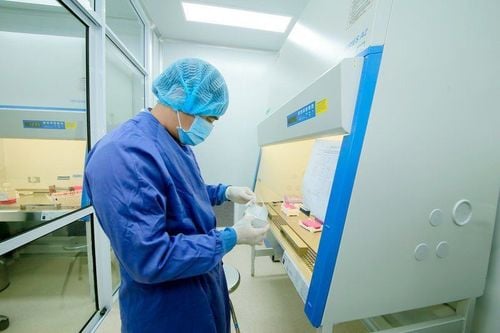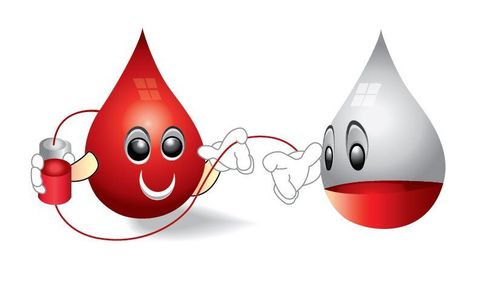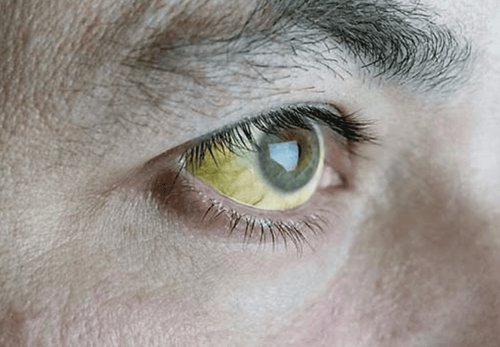This is an automatically translated article.
Leukemia is a disease that begins in the bone marrow, where blood cells are produced. Treatment of blood cancer is a combination of many different methods depending on the stage of the disease and the patient's health condition.1. What is blood cancer?
Blood cancer, also known as hematologic cancer, starts in the bone marrow, where blood cells are made. Blood cancer occurs when abnormal blood cells grow out of control, hindering healthy blood cells from fighting infection and producing new blood cells.2. Types of blood cancer
2.1 Leukemia This is a type of blood cancer that originates in the blood and bone marrow. It occurs when there are too many abnormal white blood cells in the body, which interfere with the bone marrow's production of red blood cells and platelets.2.2 Non-Hodgkin Lymphoma is a form of blood cancer that occurs in the lymphocytes - a type of white blood cell that helps the body fight infections found in the lymphatic system.
2.3 Hodgkin's Lymphoma is a form of blood cancer that occurs in the lymphocytes that exist in the immune system. Hodgkin lymphoma is characterized by the presence of an abnormal lymphocyte called a Reed-Sternberg cell.
2.4 Multiple myeloma is a form of cancer that occurs in plasma cells produced in the bone marrow.
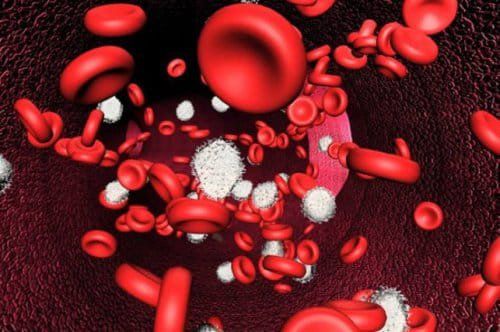
Bệnh bạch cầu là 1 trong 4 loại ung thư máu
3. Treatment methods for blood cancer
Treatment for blood cancer depends on the type of cancer, age, advanced stage, location of cancer, and a number of other factors. A few treatments for blood cancer include:3.1 Stem cell transplant A stem cell transplant is the infusion of healthy blood cells into the body. Stem cells can be collected from bone marrow, circulating blood, and umbilical cord blood.
3.2 Chemotherapy Chemotherapy is the use of anti-cancer drugs to interfere with and stop the growth of cancer cells in the body. It's a combination of drugs. Chemotherapy may be indicated before a stem cell transplant.
3.3 Radiation Therapy Radiation therapy is used to kill cancer cells, relieve pain, or reduce discomfort. Radiation therapy may also be indicated before a stem cell transplant.

Có thể điều trị ung thư máu bằng phương pháp ghép tế bào gốc
4. Treatment of acute myeloid leukemia (AML)
4.1 Intensive chemotherapy Chemotherapy is a method of using chemicals to destroy cancer cells, mainly by stopping the cells' ability to grow and divide. Drugs are introduced into the body through the bloodstream to destroy cancer cells present in the body. The chemicals are prescribed by oncologists and hematologists.Chemotherapy is the initial treatment for acute myeloid leukemia (AML). Systemic chemotherapy drugs are delivered in the blood to destroy cancer cells by:
Intravenous: Drugs can be given through small or large veins. Usually, the drug is injected into the arm. If injections into large veins such as the subclavian vein are needed, a catheter will be placed first. Injected into the cerebrospinal fluid Tablets or capsules Subcutaneous injection Treatment cycles are scheduled for a certain period of time. Patients may receive a single drug or a combination of several drugs.
4.2 Chemotherapy by phase The treatment regimen is divided into 3 phases: induction, post-remission and consolidation.
4.2.1 Induction Therapy Induction therapy is the first choice of therapy after diagnosis. The goal of induction therapy is complete remission (CR). A person is said to be completely symptom-free when:
The blood cell count returns to normal No cancer cells are found in the bone marrow sample when viewed under the microscope No more signs or symptoms of AML The indicated drug is cytarabine (cytosar-U) taken for 4-7 days and an anthracycline antibiotic such as daunorubicin (cerubidine) or idarubicin (idamycin) taken regularly within 3 days at most. Your doctor may also prescribe hydroxyurea (droxia, hydra) to lower your white blood cell count. In addition to killing cancer cells, these drugs also destroy healthy cells, increasing the risk of infection and bleeding. Most patients need to stay in the hospital for 3-5 weeks during treatment before their blood cell counts return to normal. Sometimes, it takes up to 2 courses of treatment to achieve the goal of treatment. Approximately 75% of young people and 50% of people >60 years of age achieve treatment goals.

Các loại thuốc ngoài tiêu diệt tế bào ung thư còn tiêu diệt cả các tế vào khỏe mạnh
4.2.2 Post remission After induction treatment, some cancer cells remain that are not shown by the test results. Therefore, post-remission treatment is the next step to more thoroughly eliminate cancer cells. For some patients, a marrow/stem cell transplant is done as a therapy used for post-remission.
4.2.3 Consolidation Chemotherapy or stem cell transplantation are options used in consolidation therapy.
Some young people are prescribed 2 to 4 courses of medium or high dose cytarabine or other high dose chemotherapy at monthly intervals. A number of other therapies are also offered for older adults. Most people are able to self-medicate at home during the recovery period.
Marrow/stem cell transplantation is the recommended consolidation therapy for young adults that includes cytological, or molecular, predictive studies.
4.3 Targeted Treatment Targeted therapy is treatment that targets the genotype and protein of the cancer cell or the tissue environment that favors the growth and survival of the cancer cell. Treatments help stop the growth and spread of cancer cells and limit damage to healthy cells.
Recent studies show that all types of cancer have the same goal. To find the most effective treatment, doctors need to test the genotype, protein, and other factors on the tumor. This helps doctors to provide the right treatment for each patient.
4.4 Treatment of acute promyelocytic leukemia (APL) Treatment of APL is very different from treatment of AML. APL is sensitive to ATRA - a medicine containing vitamin A, given by mouth. ATRA (Arsenic trioxide) may be used in induction therapy alone, or in combination with post-remission treatment or recurrent APL. Mild or severe bleeding is a common symptom of APL. The patient requires a high platelet count in the treatment of this disease.
4.5 Radiation Therapy Radiation therapy is a method of using high-energy rays (X-rays or other types of rays) to destroy cancer cells. The doctor who performs radiation therapy is called a radiologist. The most commonly used method is external beam radiation therapy, which means that radiation is given from outside the body. Because AML is found in the blood, radiation therapy is usually only used when the leukemia cells have spread to the brain or to shrink a spinal sarcoma.
Side effects of radiation therapy include fatigue, skin allergies, indigestion, stomach pain, decreased bowel movements. Most of these side effects go away after the radiation therapy is finished.
Customers can directly go to Vinmec Health system nationwide to visit or contact the hotline here for support
MORE:
Learn about self-supporting immune system-boosting therapy cancer Effectiveness of autologous immune system therapy to support cancer treatment To what extent does autologous immune system booster therapy help increase immunity for cancer patients?




